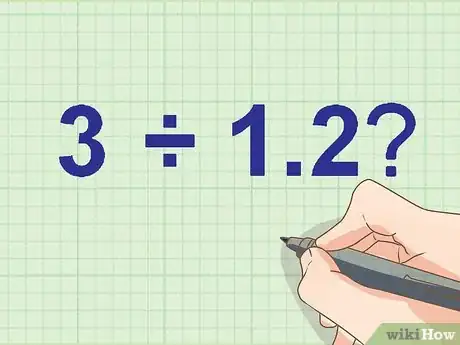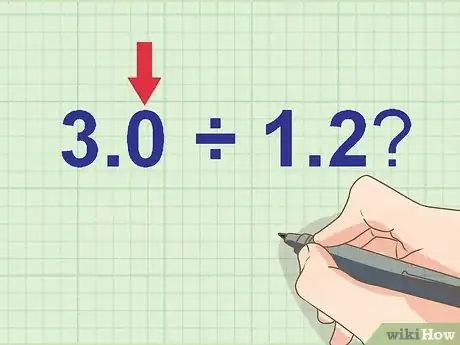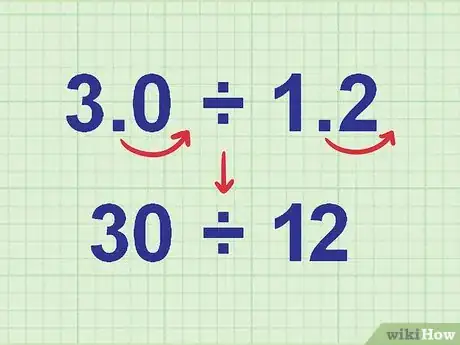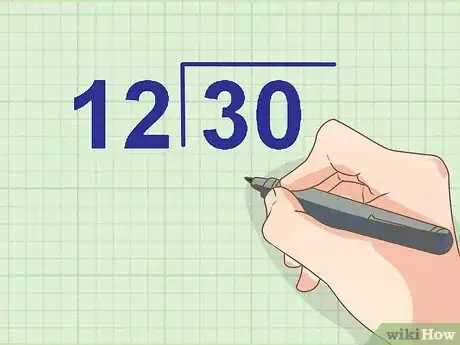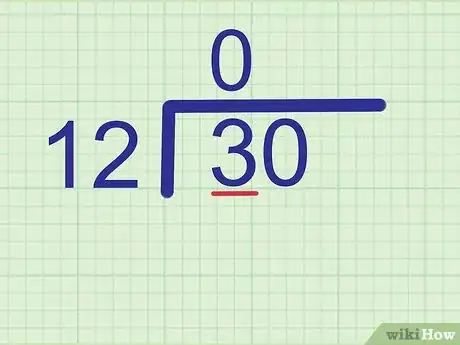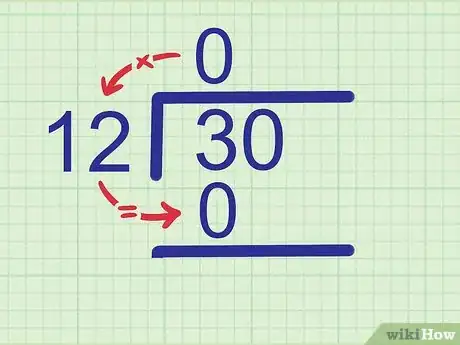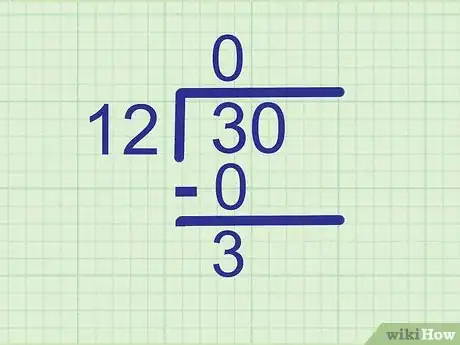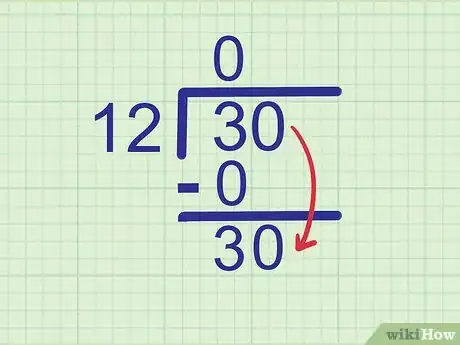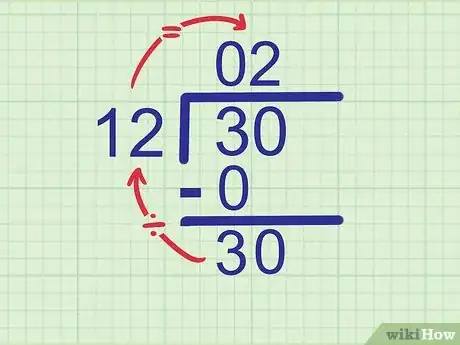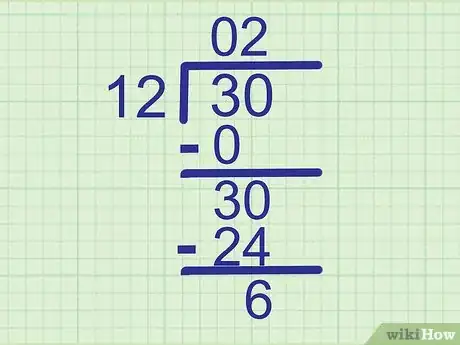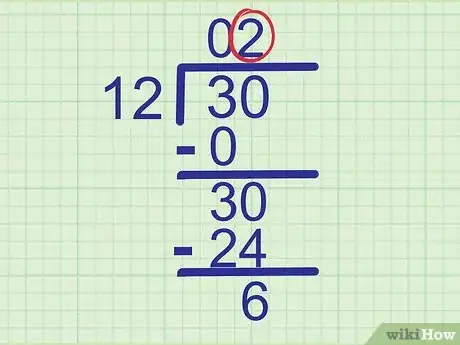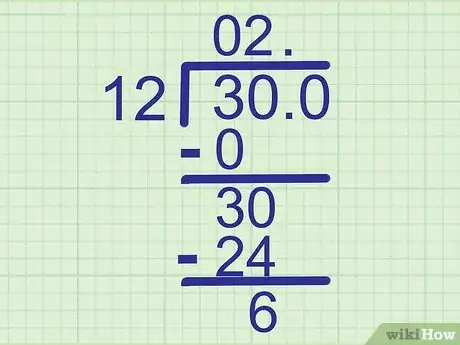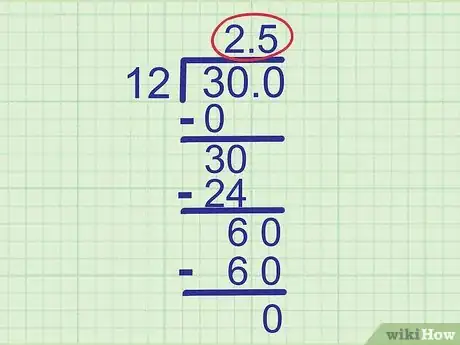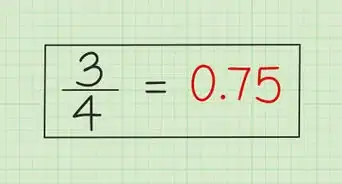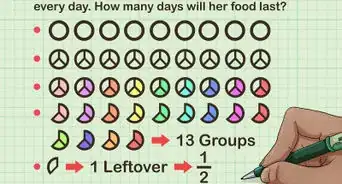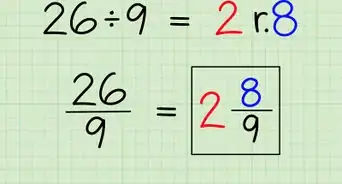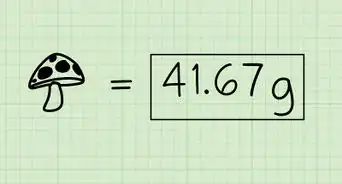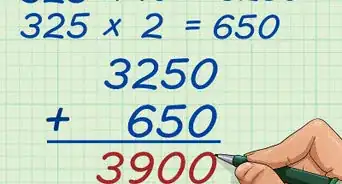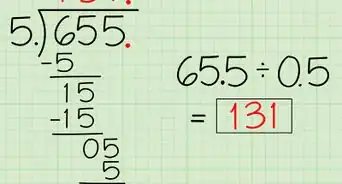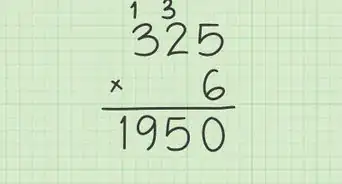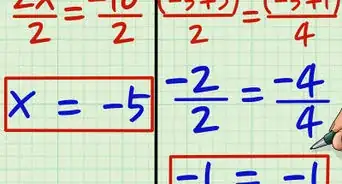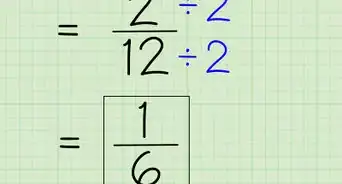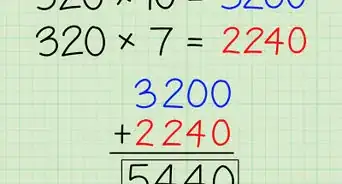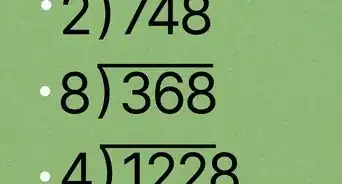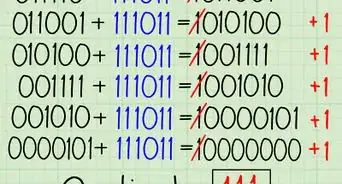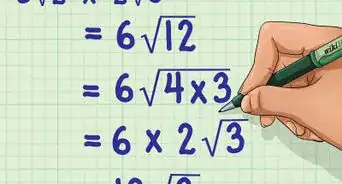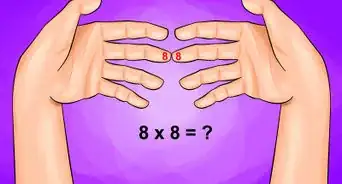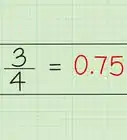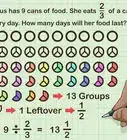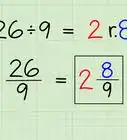This article was co-authored by Grace Imson, MA. Grace Imson is a math teacher with over 40 years of teaching experience. Grace is currently a math instructor at the City College of San Francisco and was previously in the Math Department at Saint Louis University. She has taught math at the elementary, middle, high school, and college levels. She has an MA in Education, specializing in Administration and Supervision from Saint Louis University.
There are 9 references cited in this article, which can be found at the bottom of the page.
This article has been viewed 311,234 times.
Dividing by a decimal number can look difficult at first. After all, no one taught you the "0.7 times tables." The secret is to change the division problem into a format that only uses whole numbers. Once you've rewritten the problem in this way, it becomes a regular long division problem.[1]
Steps
Writing the Problem as an Ordinary Division Problem
-
1Write out your division problem. Use pencil in case you want to revise your work.
- Example: What is 3 ÷ 1.2?
-
2Write the whole number as a decimal. Write a decimal point after the whole number, than write zeroes after the decimal point. Do this until both numbers have the same number of places to the right of the decimal point. This does not change the value of the whole number.[2]
- Example: In the problem 3 ÷ 1.2, our whole number is 3. Since 1.2 has one place to the right of the decimal point, rewrite 3 as 3.0, so it also has one place after the decimal. Now our problem is 3.0 ÷ 1.2.
- Warning: do not add zeros to the left of the decimal point! 3 is the same as 3.0 or 3.00, but it is not the same as 30 or 300.
Advertisement -
3Move the decimal points to the right until you have whole numbers. In division problems, you're allowed to move the decimal points, but only if you move them by the same amount for each number. This lets you turn the problem into whole numbers.[3]
- Example: To turn 3.0 ÷ 1.2 into whole numbers, move the decimal points one space to the right. 3.0 becomes 30, and 1.2 becomes 12. Now our problem is 30 ÷ 12.
-
4Write the problem using long division. Put the dividend (usually the larger number) under the long division symbol. Write the divisor outside it. Now you have an ordinary long division problem using whole numbers. If you want a reminder of how to do long division, read the next section.[4]
- All that’s left is to figure out how many times the divisor goes into the dividend.
Solving the Long Division Problem
-
1Find the first digit of the answer. Start solving this just as you would normally, by comparing the divisor to the first digit of the dividend. Calculate the number of times the divisor goes into this digit, then write this number above that digit.[5]
- Example: We're trying to fit 12 into 30. Compare 12 to the first digit of the divisor, 3. Since 12 is larger than 3, it goes into it 0 times. Write 0 above the 3, on the answer line.
-
2Multiply that digit by the divisor. Write the product (the answer to the multiplication problem) down below the dividend. Write it directly below the first digit of the dividend, since this is the digit you just looked at.[6]
- Example: Since 0 x 12 = 0, write 0 underneath the 3.
-
3Subtract to find what's left over. Subtract the product you just found from the digit directly above it. Write the answer on a new line below.[7]
- Example: 3 - 0 = 3, so write 3 directly below the 0.
-
4Bring down the next digit. Bring the next digit of the dividend down next to the number you just wrote.[8]
- Example: Our dividend is 30. We've already looked at the 3, so the next digit to bring down is 0. Bring this down next to your 3 to make 30.
-
5Try to fit the divisor into the new number. Now repeat the first step of this section to find the second digit of your answer. This time, compare the divisor to the number you just wrote down on the lowest line.
- Example:' How many times does 12 fit into 30? The closest we can get is 2, since 12 x 2 = 24. Write 2 in the second spot of the answer line.
- If you're not sure what the answer is, try some multiplication problems until you find the largest answer that fits. For example, if it seems like 3 is about write, multiply out 12 x 3 and you'll get 36. This is too big, since we're trying to fit within 30. Try the next one down, 12 x 2 = 24. This does fit, so 2 is the correct answer.
-
6Repeat the steps above to find the next number. This is the same long division process used above, and for any long division problem:
- Multiply the new digit on your answer line by the divisor: 2 x 12 = 24.
- Write the product on a new line below your dividend: Write 24 directly underneath 30.
- Subtract the lowest line from the one above it: 30 - 24 = 6, so write 6 on a new line underneath.
-
7Continue until you reach the end of the answer line. If there's still another digit left in your dividend, bring it down and continue solving the problem the same way. If you've reached the end of the answer line, go to the next step.[9]
- Example: We just wrote 2 at the end of the answer line. Go to the next step.
-
8Add a decimal to extend the dividend if necessary. If the numbers divided evenly, your last subtraction problem has "0" as the answer. That means you're done, and you have a whole number as the answer to your problem. But if you've reached the end of the answer line and there's still something left to divide, you'll need to extend the dividend by adding a decimal point followed by a 0. Remember, this does not change the value of the number.[10]
- Example: We're at the end of the answer line but the answer to our last subtraction problem is "6." Extend the "30" under the long division symbol by adding ".0" to the end. Write a decimal point at the same spot on the answer line as well, but don't write anything after it yet.
-
9Repeat the same steps to find the next digit. The only difference here is that you must bring the decimal point up to the same spot on the answer line. Once you've done that, finding the remaining digits of the answer is exactly the same.[11]
- Example: Bring down the new 0 down to the last line to make "60." Since 12 goes into 60 exactly 5 times, write 5 as the last digit on our answer line. Don't forget that we put a decimal on our answer line, so 2.5 is the final answer to our problem.
Community Q&A
-
QuestionHow do I divide a whole number and a decimal if the whole number is larger than the decimal?
 Community AnswerYou have to keep adding zeros to the end of the decimal until the whole number can fit inside it.
Community AnswerYou have to keep adding zeros to the end of the decimal until the whole number can fit inside it. -
QuestionWhy do we need to move the zero so it will disappear?
 DonaganTop AnswererIf you're asking about the zero in the quotient above, it's because 02.5 is the same as 2.5, and it's just easier to write it without the zero.
DonaganTop AnswererIf you're asking about the zero in the quotient above, it's because 02.5 is the same as 2.5, and it's just easier to write it without the zero. -
QuestionWhen did the 6 on the bottom become 5 on the top?
 DonaganTop AnswererIt didn't. Instead, a zero was brought down to the bottom line, turning the 6 into a 60. Then 12 was divided into 60, giving 5, which was entered on the top.
DonaganTop AnswererIt didn't. Instead, a zero was brought down to the bottom line, turning the 6 into a 60. Then 12 was divided into 60, giving 5, which was entered on the top.
Warning
- Remember, 30 ÷ 12 will give exactly the same answer as 3 ÷ 1.2. Don't try to "correct" your answer afterward by moving the decimals back.[12]
References
- ↑ https://www.khanacademy.org/math/arithmetic/arith-decimals/arith-review-dividing-decimals/v/dividing-decimals
- ↑ https://www.mathsisfun.com/dividing-decimals.html
- ↑ https://www.montereyinstitute.org/courses/DevelopmentalMath/TEXTGROUP-1-8_RESOURCE/U03_L2_T2_text_final.html
- ↑ https://www.cuemath.com/numbers/dividing-decimals/
- ↑ https://www.mathsisfun.com/long_division.html
- ↑ https://www.mathsisfun.com/long_division.html
- ↑ https://www.cuemath.com/numbers/long-division/
- ↑ https://www.cuemath.com/numbers/long-division/
- ↑ https://www.mathsisfun.com/long_division.html
About This Article
To divide a whole number by a decimal, write out the division problem with both numbers represented as decimals with the same number of places to the right of the decimal point. For example, you would write 3.0 with one decimal place divided by 1.2. Then, move the decimal places to the right until you have 2 whole numbers. In this case, you would have 30 divided by 12. Solve this problem as a normal long division equation to get your final answer, which would be 2.5 in this case. Remember to include any decimal places in your answer. If you want to learn how to work through the long division problem, keep reading the article!
